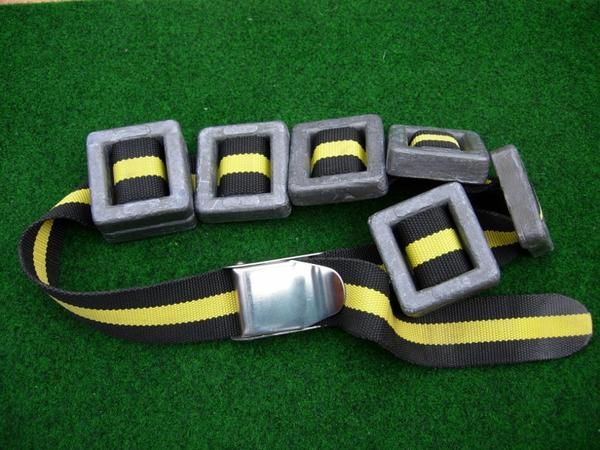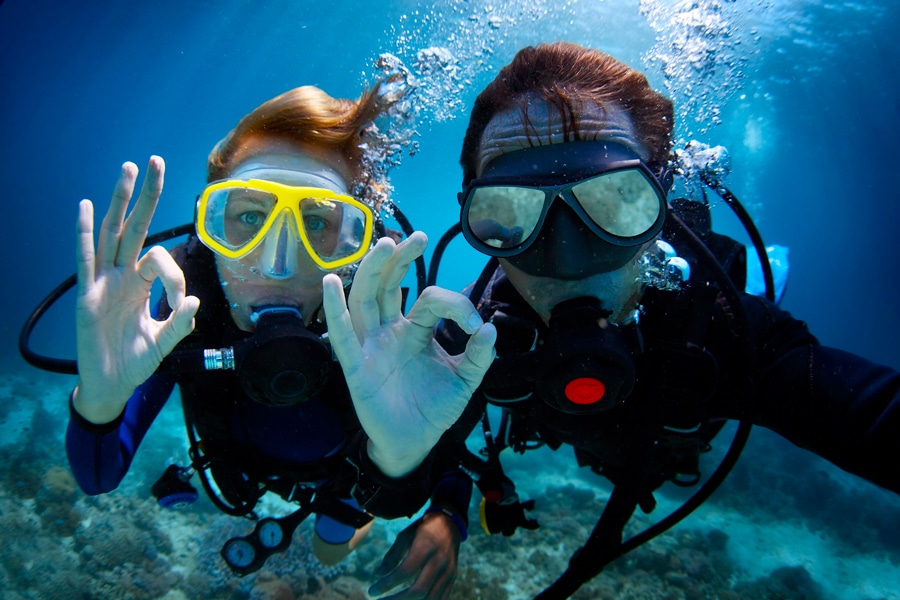The correct size of your diving weight belt, as well as the buckle, material, and weight distribution, are aspects that a diver considers when choosing one. That’s why we’ve dedicated this article to the diver’s weight belt and those aspects you should consider to make the right choice.

Cozumel Wreck Diving in Chankanaab
22/10/2019
Interview With Milan, Excursion Guide In Punta Cana
12/11/20191. What Are Dive Weight Belts?
2. Divers Weight Belt: What Is It For?
2.1. Divers Weight Belt for Buoyancy Control
2.2. The Diving Belt Helps Us Control the Trim
3. Types Of Diving Belts and Their Parts
3.1.Types Of Divers Weight Belts According to Material
3.2. Types Of Diving Weight Belts According to The Release Mechanism
3.3. Types Of Dive Weight Belts According to Weight Distribution
4. What Is the Correct Size for A Diving Weight Belt?
5. The Most Common Problems with Divers Weight Belts
6. Is It Worth Buying a Diving Weight Belt?
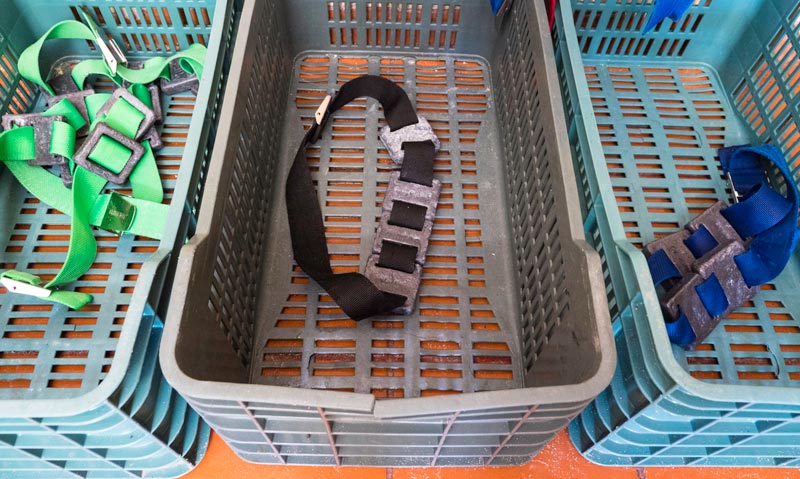
1. What Are Diving Weight Belts?
These belts are designed to carry dive weights that are distributed around the waist of the diver, allowing them to dive more easily, but they have more uses.
2. Divers Weight Belt: What Is It For?
The two main functions of the scuba belt are dive weight and trim adjustment.
2.1. Divers Weight Belt for Buoyancy Control
As we saw in the article 3 Secrets of Buoyancy Control to Dive as An Expert Diver, there are elements with positive buoyancy that will condition our dives. Everything that makes us ascend toward the surface has positive buoyancy, but we want to descend. The divers weight belt will be our ally.
Among those elements with positive buoyancy is the human body itself, which has an approximate density of 0.95 kg/liter and therefore floats. The neoprene suit with its microscopic air bubbles or, the dry suit that fills with air, also contributes to positive buoyancy and so is also something to consider.
Another point to consider is the air contained in the tanks. This air weighs, but as the diver consumes the air, the weight decreases. However, they still need to maintain neutral buoyancy until the end of the dive
This is why we need to add a dive belt to our equipment.
2.2. The Diving Belt Helps Us Control the Trim
What is trim? Trim refers to the diver’s position in the water to maintain balance and alignment with the direction of movement.
A fundamental principle is that if the weight and buoyancy centers are in line, we will achieve level trim, and we won’t carry our head higher than our feet or vice versa.
It’s crucial to know how to position the diving weight belt with the appropriate amount of dive weight to achieve this balance. However, optimal trim will depend on the task we are performing on the seabed.
For instance, commercial divers who need to walk on the bottom to perform their job will require vertical trim. That’s why many divers put weights on their feet.
On the other hand, recreational divers who usually swim horizontally and observe the bottom without touching the coral to avoid damaging it should wear the divers weight belt around the waist for ideal trim.
The best way to compensate for horizontal trim is to distribute the weight around the body. The diving weight belt is a part of the equipment that will assist with this.
The human flotation center is situated about 7 cm below the sternum and 10 to 15 cm above the navel. Additionally, during dives, we carry heavy scuba tanks, so it’s necessary to balance the body to keep it in a horizontal position.
Generally, dive weight belts are worn around the waist or just above the hips to carry weights comfortably. We can also use the weight pockets included in the BCD or harness.
To achieve fine adjustment, it’s ideal to place small weights along the diver’s body so that the center of gravity can be brought to the desired position.
There are several ways to accomplish this, but the essential aspect is achieving that perfect balance so that we can move easily and enjoy our dive to the fullest.
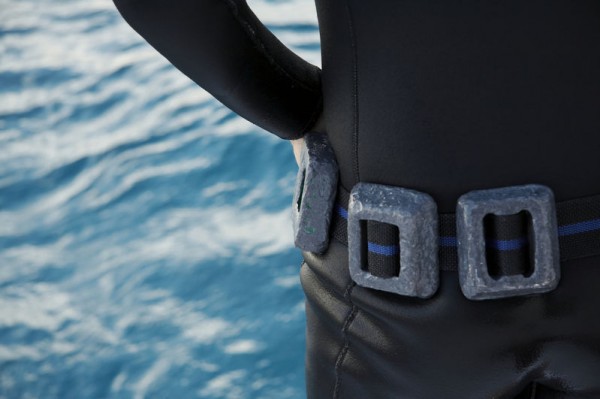
3. Types Of Diving Belts and Their Parts
Usually, a scuba weight belt consists of a strap to which different pieces of lead (usually weighing 1/2 kg or 2-4 lbs each) are attached.
3.1. Types Of Diving Weight Belts According to Material
If we look at the material the scuba weight belt is made of, we can distinguish two types:
A dive belt made with polypropylene or nylon straps: This type of strap is very common in recreational diving as they are durable and resistant.
A rubber scuba weight belt: These straps have a shorter lifespan as the material is not as resistant. However, they have an advantage in that the weights and the belt won’t move from their position, but it will also be more difficult to insert and remove them.
3.2. Types Of Diving Weight Belts According to Release Mechanism
As you know, one of the basics of a weighted dive belt is that it incorporates a quick-release buckle. That is, it can be disengaged with a simple movement.
Based on the release mechanism, we can find the following types of dive belts:
Classic belts with a waist buckle that can be released with the right hand. These buckles can be made of metal or plastic. We recommend the former as they are much safer.
Marseilles scuba weight belts have holes in the strap and a buckle with a hook that goes into them. This type of scuba diving weight belt has a more complicated release mechanism and is therefore less secure.
3.3. Types Of Dive Weight Belts According to Weight Distribution
When it comes to weight distribution in a scuba diving weight belt, there are a few options to consider:
First, there are dive belts that use weights in the form of pills inserted along the strap. These weights, typically ranging from 2 lbs./1 kg to 15 lbs./6 kg, have two openings that slide through the belt. However, the downside to these belts is that they can be uncomfortable as the weights may dig into the hips.
Alternatively, there are dive belts with weights in pockets, which use a nylon strap with multiple pockets sewn onto it to hold the weights. This design allows for easy weight adjustment without having to remove and insert individual weights every time. Additionally, since the weights are covered by the pockets, they won’t dig into your body, making for a more comfortable dive.
Another advantage of this type of dive belt is that it can accommodate any type of weight, whether they are weight pouches or pill-form weights.
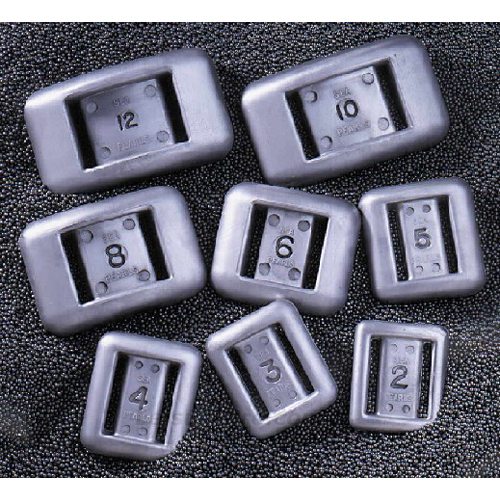
4. What Is the Correct Size for A Diving Weight Belt?
We know that wearing a dry suit with 12 kg/26 lbs. around your waist is not the same as diving in the Caribbean Sea with a 3 mm wetsuit and 6 kg/13 lbs. That’s why when selecting your diving weight belt, consider the type of diving you’ll be doing the most and make your choice accordingly.
If you decide to go with a diver’s weight belt that has pockets, follow the manufacturer’s size guide and select the one that fits you best.
Alternatively, if you choose a nylon belt, the best way to determine the correct size for your dive belt is to measure your waist while wearing your wetsuit.
To ensure a comfortable fit for your diving weight belt during the dive, it’s important to have an appropriate length for the free end. The free end should not be too long as it could get caught on something and hinder your movement underwater. On the other hand, if it’s too short, it will be difficult to adjust the belt during the dive. The recommended length for the free end of the belt is between 10 and 15 cm, and it should never exceed 20 cm.
So, add the necessary amount to pass the buckle, plus an extra size of your hand to your waist measurement. This will allow you to easily remove the belt if needed, and it will be the correct size for your dive weight belt.
It’s common for divers to leave excess nylon that they then tie in any way. However, this is a mistake because it can create difficulties when trying to get rid of the belt.
As you can see, knowing the correct size of the weighted dive belt is a matter of safety. So, if you have any doubts, feel free to contact us.
5. The Most Common Problems with Diver’s Weight Belts
According to Diver Alert Network DAN, there are several issues in diving that are directly related to the diver’s weight belt. The Australian DIMS study found some common errors that include:
- Not properly securing the diving weight belt buckle;
- Securing the loose end of the diver’s weight belt instead of leaving it loose for quicker release;
- Realize they do not have enough weight when entering the water;
- Over-weighting, which leads to vertical diving and increased workload;
- Losing weights that have been placed in the BCD or jacket to compensate, due to poorly closed Velcro;
- Incorrectly adjusting the dive weight belt, causing the weight to flip over and fall forward, while the buckle is in the back and out of reach;
- Constantly checking and releasing the buckle;
- Damage or injury caused by improper handling or placement of weights.
Some tips to avoid these problems involve properly placing the weight on the diving weight belt. Instead of concentrating it mostly on the back, it is necessary to evenly distribute it around the hips. This way, we will avoid the belt from flipping over.
In addition, it is essential to ensure that the weights do not move and complicate access to the buckle. This can be done by threading the buckle through one of the loops, twisting it, and then threading it through the other. You can also use stops to prevent the diving weights from moving.
In case of an emergency, it is important to quickly release the divers weight belt, so we must ensure that there are no straps or harnesses that prevent it. It is essential to verify that there are no knives or other tools placed in a way that can trap the belt that needs to be released.
6. Is It Worth Buying a Diving Weight Belt?
For those who travel to different places to dive and want to avoid paying overweight fees imposed by airlines, the ideal alternative is to rent a diver’s weight belt.
However, you can also choose a belt with pockets designed to hold soft or hard weights. These belts allow us to use our own equipment and a belt that we know well and that fits our gear. This way, we can travel with our own equipment without having to transport heavy weights from one place to another around the world. We will rent the diving weights at the dive center.
With Dressel Divers, you won’t have to rent your diving weight belt or weights, as they are included for free.


